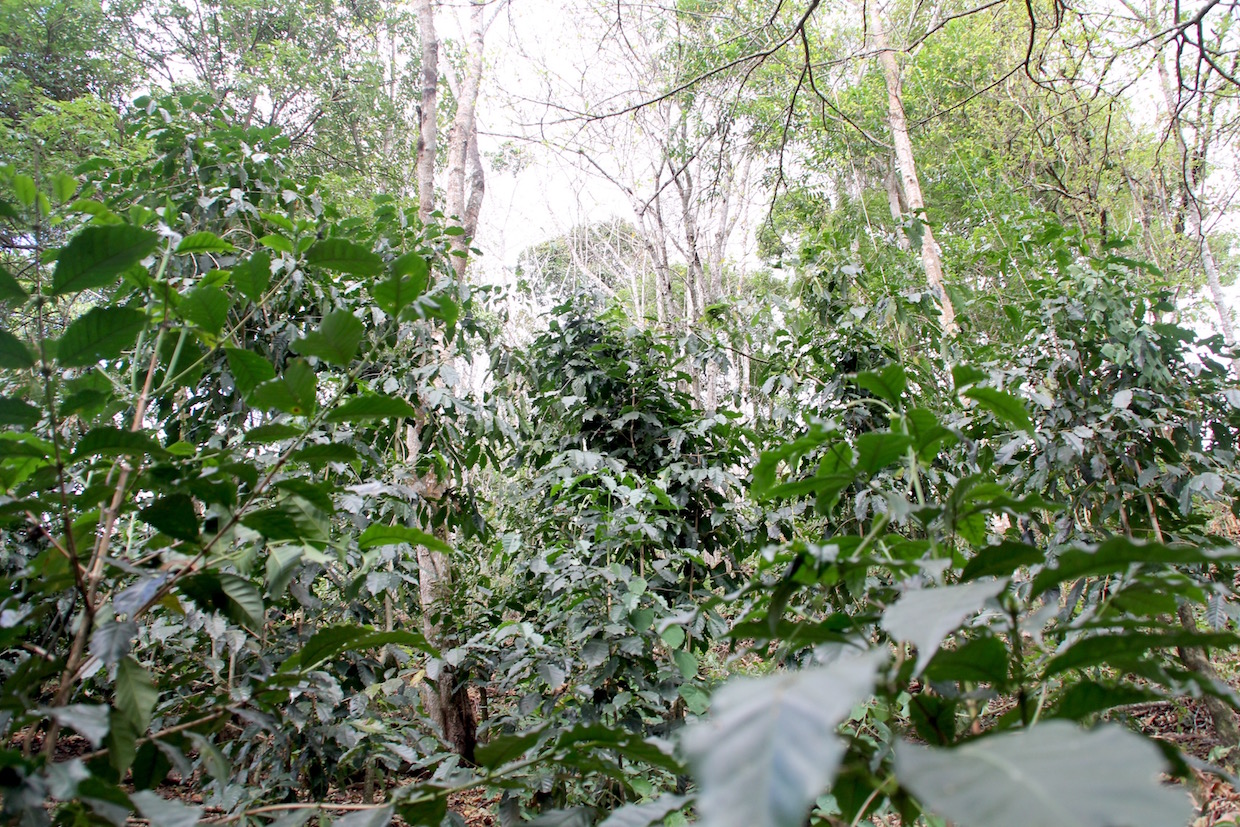Research shows that shade planting can help coffee farmers maximize their interests.

Professional coffee knowledge exchange more coffee bean information please follow the coffee workshop (Wechat official account cafe_style)
Coffee growers can maximize profits by converting 1/3 to 2/3 of their farmland into shade, according to a groundbreaking new study that attempts to quantify economic associations by moving away from traditional direct exposure farming practices.
In a paper published in the journal Ecological Economics in May, researchers from Columbia University and Cornell University explored the potential economic incentives for coffee producers to shift from direct exposure to shaded growth to mimic traditional forest canopies, in which trees provide more biodiversity, including pest-eating birds.
Direct exposure to coffee is usually associated with higher yields because shade may limit the development of whole leaves and fruits. On the other hand, full Sunshine Coffee also has higher associated input costs, increasing soil degradation, deforestation, lack of diversity, and other host environmental problems that threaten the future of coffee itself.
A major component of the study and its economic models relate to the ability of farmers to plant for shade-or, in other words, more environmentally friendly coffee-to attract a price premium. It therefore emphasizes the need for coffee traders and sellers to promote to consumers the economic and quality-related benefits of growing coffee under shade.
"our estimates can guide the design of market mechanisms aimed at promoting sustainable coffee practices," study author JuanNicol á s Hernandez-Aguilera said in a profile released by Columbia University's International Institute for Climate and Society. "in other words, the effective implementation of these tools depends to a large extent on the promotion and understanding of the interaction between shaded coffee, environmental protection and product quality among coffee consumers."
For this paper, the researchers used a resource economics method called dynamic optimization to simulate farmers' decision to transform their land from traditional full sunlight to shadow production. It takes into account the expected yield and the cost of each system, the benefits from increased pest control by birds, and the price premium for high-quality, sustainably grown coffee.
Based on modelling-taking into account reduced pesticide costs and "appropriate market conditions", as well as other assumptions-studies have shown that at least 36 per cent of farms covering 5 hectares should be allocated for shade planting to maximize farmers' incomes.
This supports the previous assertion by coffee industry experts that the dialogue between sunshine and shadow should not be polarized, but that both shadow and sunlight can play a role in a given coffee farm to maximize profitability and sustainability.
If more research is made public, we plan to update this story.
END
Important Notice :
前街咖啡 FrontStreet Coffee has moved to new addredd:
FrontStreet Coffee Address: 315,Donghua East Road,GuangZhou
Tel:020 38364473
- Prev

Can the coffee baking curve really be copied? What factors need to be considered in roasting coffee beans
Professional coffee knowledge exchange more coffee bean information please follow the coffee workshop (Wechat official account cafe_style) Coffee roasting can copy other people's home curve? Can you bake the same good beans? Assuming that "everything else remains the same", it makes sense to copy the baked bean curve and become more and more transparent with the transmission of online information. You can easily get coffee baked beans in an international competition in a certain year.
- Next

Ice drop coffee correct best drinking method suitable for making ice drop single product coffee beans recommended ice drop black coffee is good to drink
Professional coffee knowledge exchange more coffee bean information please pay attention to the coffee workshop (Wechat official account cafe_style) coffee in different flavor ingredients have different water solubility. Generally speaking, delicious compounds dissolve more easily than bitter ones. When it is boiled, it will go into the cup first, so the coffee with excessive extraction is better than extraction.
Related
- Beginners will see the "Coffee pull flower" guide!
- What is the difference between ice blog purified milk and ordinary milk coffee?
- Why is the Philippines the largest producer of crops in Liberia?
- For coffee extraction, should the fine powder be retained?
- How does extracted espresso fill pressed powder? How much strength does it take to press the powder?
- How to make jasmine cold extract coffee? Is the jasmine + latte good?
- Will this little toy really make the coffee taste better? How does Lily Drip affect coffee extraction?
- Will the action of slapping the filter cup also affect coffee extraction?
- What's the difference between powder-to-water ratio and powder-to-liquid ratio?
- What is the Ethiopian local species? What does it have to do with Heirloom native species?

